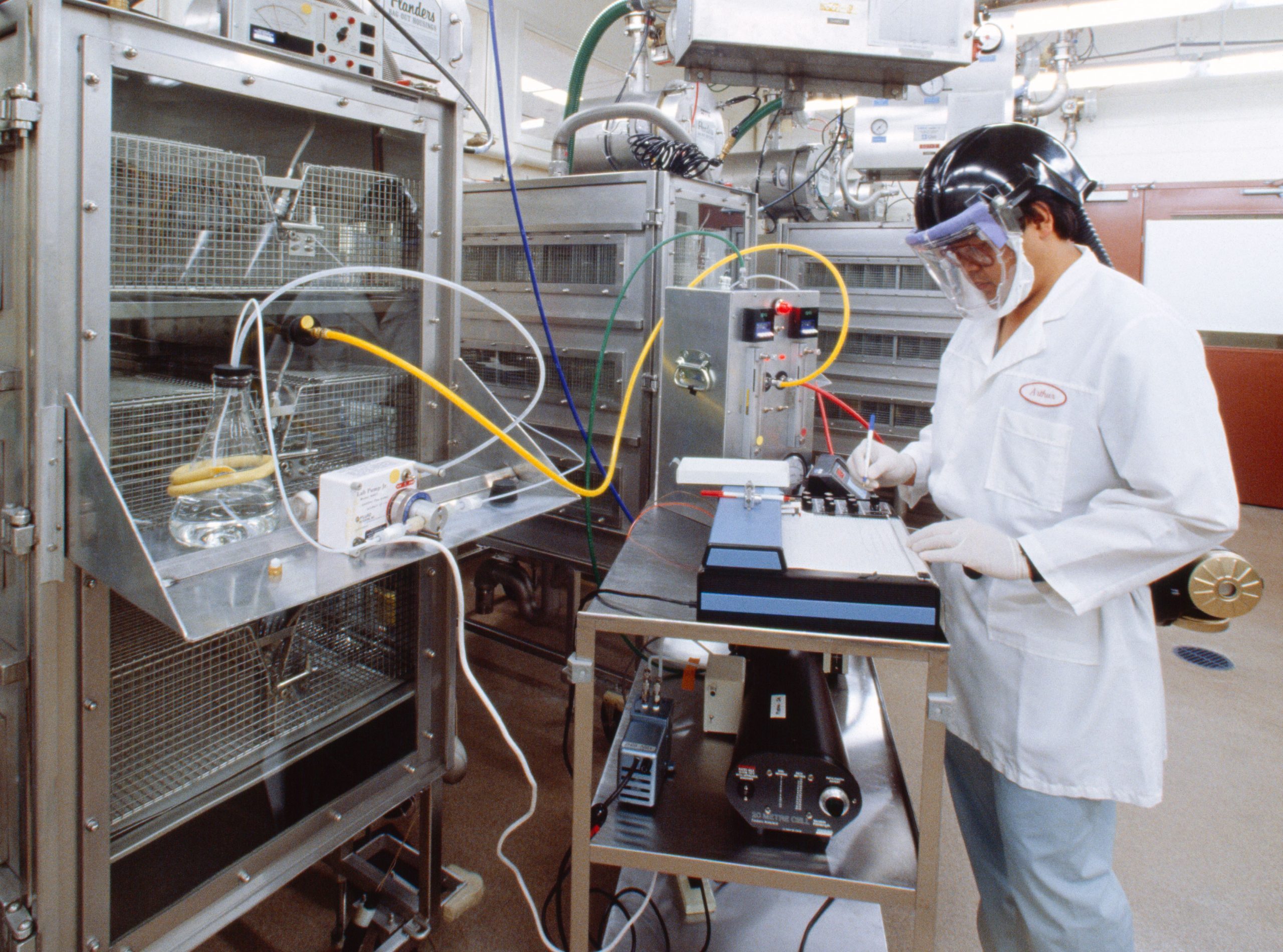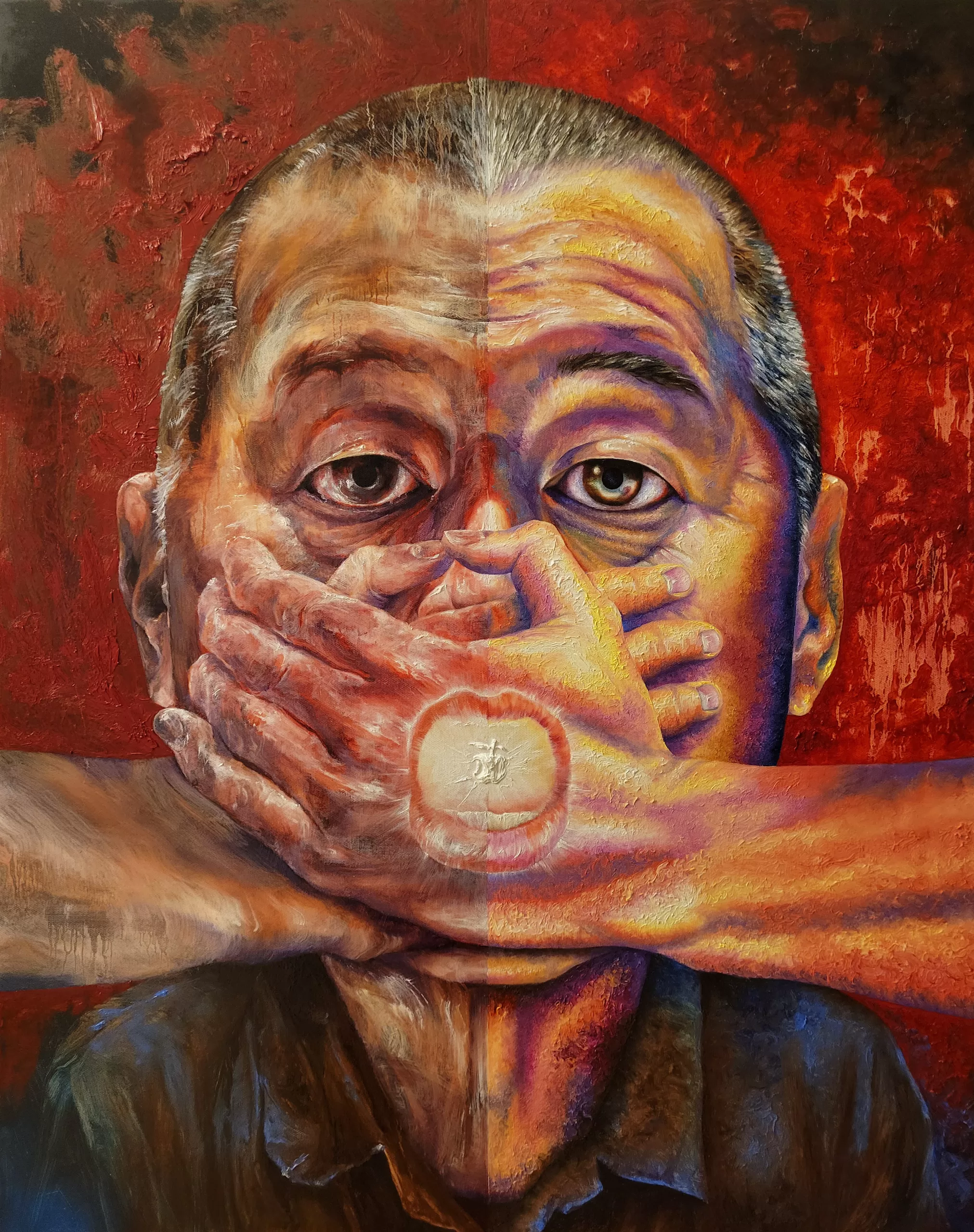Lisa Jones-Engel never envisioned being thrown out of a conference hours before she was due to give a keynote speech. But that’s exactly what happened when she told the organisers of an event for scientists involved in animal testing about her new role with the non-profit People for the Ethical Treatment of Animals (Peta).
The first reaction to her announcement had been “Maybe don’t come to dinner with us tonight in case anyone asks what you’re doing,” along with an instruction to remove the Peta reference from the cover slide of her presentation. All the other slides were approved.
Jones-Engel is a former primate scientist who spent years running tests on monkeys and is now working to eradicate the use of primates in biomedical research, but she was not there to talk about her work with Peta.
With her keynote due at 9am, she got a text at around 7.15am asking her to meet the organisers downstairs.
“There’s the three of them plus the chair, and then they said, ‘Leadership has decided that you can’t do this,’” she told Index. They took her security badge.
Jones-Engel thought there had been a mistake. She was a senior scientist. She’d given this exact talk before on international stages. Holding in the tears, she took the lift back to her room. Within minutes, there was a knock at the door.
“They’re confused. They’re coming here to say they’re sorry,” she remembers thinking. Instead, it was security, there to escort her out of the hotel.
“I’ve basically just been cast out as a scientist, as far as I can tell,” she said. “What the industry did that day was to guarantee that they had just solidified who I am and who I was going to be.”
Bias in the lab
A number of scientists told Index that they were being refused funding or publication if they questioned the validity of animal-based methods, and that association with animal advocacy groups made them toxic in the world of academia. They claim others are afraid to speak up.
Some of these scientists are part of the Coalition to Illuminate and Address Animal Methods Bias (COLAAB), an international coalition of researchers and advocates addressing a crucial issue: that animal methods are still considered a necessity within medical testing, even when better science is available.
Emily Trunnell, a USA-based neuroscientist, is part of the coalition and the director of Peta’s Science Advancement and Outreach division.
“What we are interested in is when scientists who use only non-animal methods either submit manuscripts or submit grant applications, and are asked by the reviewers to add in an animal test to a study that’s otherwise completely non-animal or are rejected because they didn’t include an animal test,” she explained. “What ends up happening is that the true value of these non-animal methods becomes suppressed.”
Until recently, this phenomenon was anecdotal but a survey by scientists including Catharine Krebs, who leads Colaab, now shows the scale of the problem. Out of 90 survey respondents, 31 had been asked by peer reviewers to add animal experiments to their non-animal studies. Survey respondents came from around the world.
“You cannot validate non-animal methods using animals – that’s just not scientific,” said Frances Cheng, chief scientist in the Laboratory Investigations Department at Peta, explaining that animal data was being valued more than data based on human physiology.
Charu Chandrasekera was an animal researcher until two things drove her to change: the ethical implications, and “realising firsthand the colossal limitations of animal research”.
She explained that scientists could reduce animal testing drastically with already available technology, and she demonstrated this by showing Index an organ-on-a-chip, which simulates the responses of a human organ.
Now, she is the executive director of the Canadian Centre for Alternatives to Animal Methods at the University of Windsor, which promotes human biology-based tests. But when she was trying to establish a centre for alternatives, the response she got from the dean of science at one university was: “You’ve got to be kidding me. I don’t want to offend the animal researchers here.”
She told Index there was a culture within the scientific community that disregarded human data as anecdotal, and required that scientists validated human data with animal models.
“The system is set up in a way that you can’t really fight it if you want to have a career in academia,” she said. “You have to publish or perish. You depend on these funding agencies to give you the money, and they’re requesting animal data.”
Chandrasekera has experienced this bias herself. When she applied for a grant to develop a 3D bio-printed human lung tissue model, one of the biggest criticisms from the peer review was a lack of animal data.
“And guess what I did? I said, ‘Keep your money!’” She went on to secure private funding, but she added: “Not everyone has the means to fight against the system.”
She knows scientists who support animal-free methods but stay silent. They are worried about the implications when they sit in front of grant review panels and journal editorial boards.
Dismissing activists
Jones-Engel said there was a group of scientists who functioned as activists and received silencing treatments like she did before her cancelled keynote speech.
“It seems that in other disciplines we accept scientist activists. We accept climate scientists who are activists. We accept physicians who advocate for their patients, who are activists about maternal rights. But within the animal research community, that is somehow considered anathema,” she said.
She has seen colleagues choosing not to speak up about the use of primates in laboratories because they don’t want to be seen as activists.
When Cheng questioned the use of animals during her training, she was not trying to highlight animal cruelty but rather that the methods were unscientific, with animal biology not translating to human biology. When she wrote a line in the dedication of her thesis apologising to the animals she’d unnecessarily killed, her supervisor told her to remove it, as it would lower her chance of graduation. She was told her job was to graduate, not to think about animal cruelty and translatability. Now, Cheng keeps a tally of all the animals she’s saved compared with the ones she’s killed, so that she can see on paper that the results are net positive.
Once she’d graduated, she knew she did not want to work in the animal testing industry, and she volunteered at a hospital doing clinical research. The role of co-ordinator of clinical trials became available, and her supervisor was supportive of her application. She waited for a response, and then she received an email from her supervisor, asking her to join him on a walk in the woods, away from monitored communications.
He’d been told by the second-in-command that they couldn’t hire Cheng because she was an animal rights activist.
“At that time, I really wasn’t,” she said. “I think the only thing that was public was a photo that people took of me at a circus protest, and it was on my Facebook account, and it was set private, so the only way that they would know is if they’d hacked into my account somehow.”
The second-in-command went on to tell her supervisor: “You know we do animal research, right?”
More recently, Cheng tried to submit a science-based commentary on issues with using mice and rats for human nutrition research but was rejected by the reviewers because of her affiliation with Peta.
For Trunnell, when deciding whether to accept the job at Peta, she said: “I felt like the decision I was making was whether or not I was OK with being blacklisted in science in order to pursue this goal.” Ultimately, she doesn’t feel that has happened, but she remembers the assumption within the animal research community that activists were blacklisted.
The monkey in the room
In 2022, Jones-Engel was part of a group of scientists who did an assessment for the International Union for Conservation of Nature (IUCN) on the long-tailed macaque, the most widely traded species used in laboratories, finding that the species which was once everywhere in Southeast Asia was now facing a dramatic decline.
The IUCN consequently moved the monkeys to “endangered” status. Since then, she said, there had been a move by the industry to dismiss the idea that the macaques were really disappearing.
The National Association for Biomedical Research, a US non-profit which calls itself the “national voice for animal research ”, submitted a petition to the IUCN against the listing.
Jones-Engel told Index: “I was personally attacked. A petition was written by the industry targeting me, another scientist and another activist saying that, even though we’re scientists, because we are advocating for the listing of those animals to be endangered that must mean this was all being driven by the animal rights community.”
The monkeys have remained on the endangered list, and Jones-Engel said that although CITES (the Convention on International Trade in Endangered Species) could have done more, they had kept the countries supplying macaques on a review list.
There is huge money behind animal research. Cheng explained that animal tests were often used to produce health claims for food and drink, and at the moment those tests were cheaper than clinical tests.
Jones-Engel added that for companies known for using or supplying animals, there was a fine balance if they wanted to move towards non-animal testing.
“How do you not spook your shareholders? How do you not scare your investors?” she said.
Chandrasekera said there was an entire industry which benefitted financially from animal testing, from selling mice to providing specialised instruments.
They have an interest in animal tests continuing.
There have been huge developments globally in phasing out chemical testing on animals, and there is a scientific community moving away from using animals in labs. But the larger percentage, Chandrasekera said, did not want to change or were scared to do so.
She makes a stark point. While these scientists are silenced, the advancement of medicine suffers. We do not have effective treatments for a huge number of diseases, and without the acceptance of better models that translate to human biology, that can’t change.
“Federal funding agencies and scientific journals of the 21st century must stop acting like the Catholic Church of the 15th century, which silenced and persecuted brilliant minds.”






